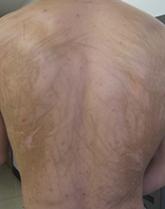News

Make the Diagnosis - April 2015
- Author:
- Dr. Damon McClain
Publish date: April 14, 2015
This case and photo were submitted by Dr. Damon McClain, a dermatologist in Camp Lejeune, N.C. A 34-year-old male presented with a 1-month...
News

Make the Diagnosis - March 2015
- Author:
- Dr. Damon McClain
Publish date: March 14, 2015
This case and photo were submitted by Dr. Damon McClain, a dermatologist in Camp Lejeune, N.C., and by Parteek Singla. A 26-year-old male...
